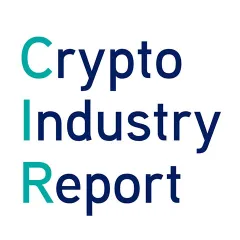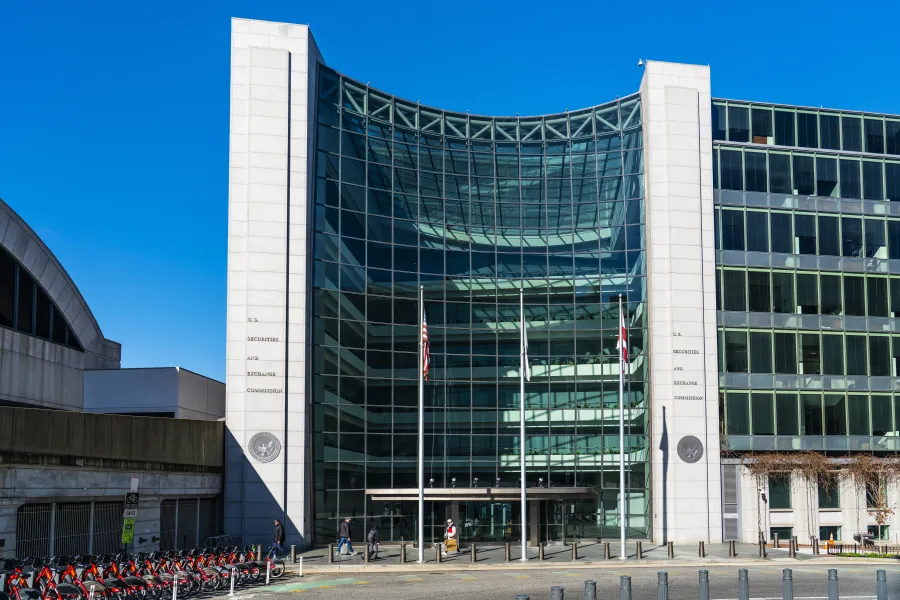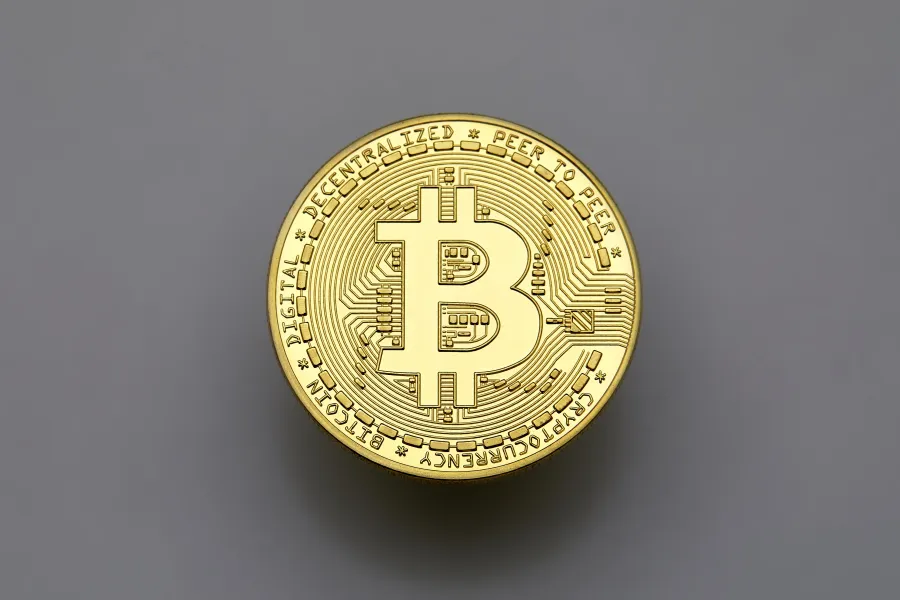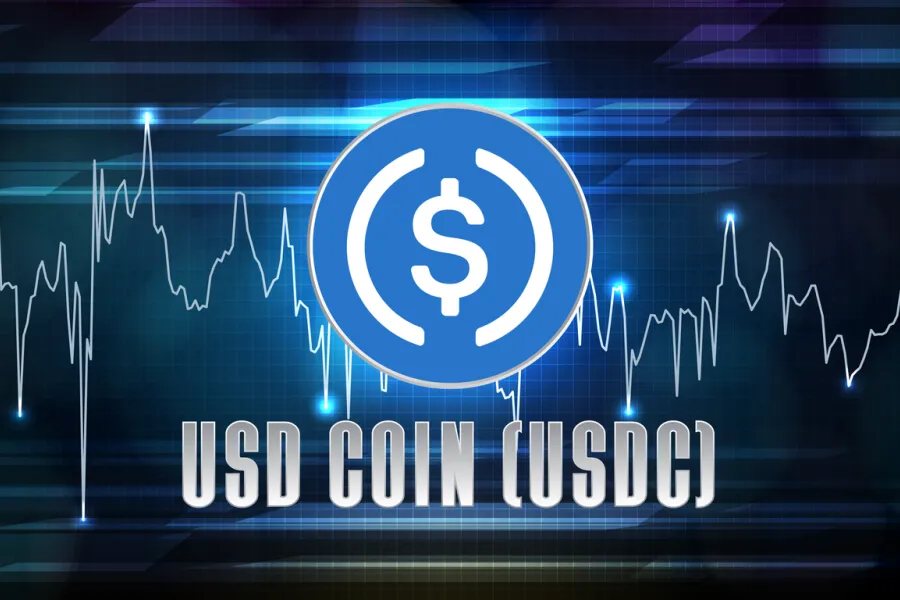Paying with crypto: Things are picking up
This week, our blockchain experts assessed the following topics:
- Paying with crypto: Things are picking up
- How to accurately define a CBDC
- Cardano: Empty hype or true smart contract platform contender?
- Miners have been leaving China for real. Where are they going?
- Market Update: ETH reaches resistance level, BTC comes close
Our bi-weekly Crypto Industry Report provides you with valuable information on the global crypto industry – picked and analysed by our blockchain experts.
Paying with crypto: Things are picking up
Bitcoin has been designed as a peer-to-peer electronic cash network. Applying a 30-day moving average, the Bitcoin network did move over 8,2 billion US dollar on its mainchain on August 22nd. Interestingly though, the volume of Bitcoin units transacted on-chain (change adjusted) has hit a five-year low. On the 18th of August, the total transfer volume stood at 329,226 BTC per day over the last seven days.
Number one reason for this is the fact that Bitcoin scales in transactional value. Bitcoin’s transfer of economic value on the base layer has been steadily growing ever since. While this is expected to continuously grow, people within Bitcoin’s inner circle are convinced that everyday payments will be increasingly offloaded to Bitcoin’s second layer, the Lightning network.
Bitcoin’s scaling solution number one has indeed been growing, 17% more BTC were moved onto the Lightning network within the last 30 days. Thanks to a lightning implementation, sats – Bitcoin’s smallest unit – can now be streamed while listing to a podcast. At the same time, company’s like Strike are demonstrating in live, how US dollars are being turned into an instantly moving asset using the lightning network. Today’s biggest payment networks are feeling that the tides are turning, which is why they ante up the game when it comes to crypto. Weeks ago, Mastercard announced a partnership with stablecoin companies Paxos as well as Circle. In a recent appearance on Coindesk, Mastercard’s executive Vice president Raj Dhamodharan expanded on Mastercard’s crypto card program, how this will bring crypto payments closer to mass adoption and how they are operating a virtual test platforms for CBDCs. All the while, Mastercard’s competitor Visa has surprised everyone big time by announcing that they purchased one of the famous CrytpoPunk NFTs. Their goal is to ultimately support the creators, collectors and artists driving the future of NFT-commerce. Visa even published a white paper on NFTs and how tey can be integrated into a firms brand strategy.
How to accurately define a CBDC
The topic of central bank digital currencies is heating up. More and more central banks are actively exploring proof of concepts around this new form of money, while some are even about to launch one. But what exactly is a central bank digital currency – usually referred to as a CBDC.
According the central bank of all central banks, the Bank for International Settlements (BIS), a CBDC is a digital payment instrument, denominated in the national unit of account, that is a direct liability of the central bank. This means: If it is not issued by a central bank, the digital money cannot be considered a proper CBDC.
When it comes to CBDCs, usually two broad concepts are discussed: Either a wholesale CBDC or a retail CBDC. The first is a type of settlement instrument only available to financial intermediaries. A retail CBDC can be considered a general-purpose money that is supposed to be open and accessible to everyone. While a retail CBDC could be launched in a direct way, most likely such a setup would exist in a hybrid or intermediated way.
Another fundamental design choice is the question whether to launch a CBDC on a blockchain or DLT-like infrastructure. A wholesale CBDC is inextricably linked to blockchain technology. After all, digital central bank reserves do exist already. With a wholesale CBDC the question really boils down to whether applying blockchain will make the existing setup more efficient. The same is not necessarily true for a retail CBDC that is generally agnostic about its platform type. A last distinction is between an account-based or a token-based CBDC. With the latter, entities using the CBDC do this through accounts, while in a token-based model, an actual token can be traded among CBDC users. Both of these setups again are platform agnostic. What a DLT-based CBDC offers though, is inherent programmability. By having a CBDC based on blockchain technology, smart contract functionality is part of the CBDC itself. Without a blockchain, the CBDC could still be made programmable using outside APIs with external logic.
Cardano: Empty hype or true smart contract platform contender?
Among large cap coins, ADA has been winning it lately. Now the world’s third biggest cryptoasset, ADA is the coin of smart contract platform Cardano. Back in 2017, the project raised more than 60 million US dollar, mainly from Japanese investors. The main brain behind Cardano is Charles Hoskinson. He is one of Ethereum’s founders that latter split away and went on to found his own blockchain network.
Cardano has been a very ambitious project from the get-go. It’s considered to be the first blockchain platform that is being developed according to peer-reviewed research. The words “being developed” are no slip of tongue though. Like many different smart contract platform – most prominently Ethereum – Cardano is no finished project. What’s special about Cardano: Their smart contract capability is only about to launch – on September 12th – as indicated by people working on Cardano in a recent video.
While the exactment around the announcement has sent ADA’s price to new all-time highs, some commentators deem Cardano’s market cap that is just shy of 100 billion US dollar bloated and driven by a fair amount of hype. Whether or not Cardano will morph into a real smart contract platform competitor to Ethereum is yet to be seen. First, the smart contract functionality needs to be released as planned – only then people can see it is good for. While Ethereum is surely ahead in terms of smart contract dApps and some claim that Cardano has no traction with developers, Cardano enthusiasts can point to the fact that Ethereum’s underlying blockchain infrastructure is also in a major transition with the merge to Ethereum 2.0 and its Proof-of-Stake consensus mechanism. One could indeed argue that the competition is about to get real.
Miners have been leaving China for real. Where are they going?
The Great Migration as it is called has miners leaving China as the country seriously cracked down on its Bitcoin mining industry. Some have called it a “Trillion-Dollar Mistake” that China has been making. While mining is still being done in China, the nation’s global share of crypto-mining has come down from around 75,5 % to 46%, according to some sources.
For some miners, China’s crackdown has meant the end of their mining business as their older mining machines are stranded. A lot of mining equipment will be brought elsewhere though, but where exactly? The most obvious candidates are countries in central Asia such as Kazakhstan, Mongolia and Russia. Kazakhstan’s share of global bitcoin mining saw an increase from 1.4% to 8.2%, which makes it the third biggest nation to do crypto-mining just behind the US and China.
Besides central Asia, North America is a big contender when it comes to gaining miners coming out of China. Especially Texas has touted itself as a place with low cost renewable power and a business as well as blockchain friendly environment. Low energy cost after all is one of the major factors in determining a miner’s profit margin. This is also why Bitcoin enthusiast and Mayor of Miami Francis Suarez has weighed in on this matter. He expressed his view that his city should actually become a Bitcoin mining hub based on its rich nuclear power.
A last prominent part of this earth to host Bitcoin miners is Central and South America. Not only has El Salvador speculated that it could profitably deploy volcano mining. Other countries like Venezuela or Paraguay could be a good match. A Paraguayan congress name by the name of Carlos Rejala introduced a bill to attract international mining companies back in July. Venezuela on the other hand has a long history of having disperse bitcoin miners all over the country. With many miners still finding a suitable place to settle, the remaining miners that are still active have recently become extremely profitable. This increase in profitability has allowed these miners to minimise their sell pressure on the market.
Market Update: ETH reaches resistance level, BTC comes close
Bitcoin and Ethereum have rallied quite astonishingly since their respective bottoms set in late July. The two biggest crypto assets have both come close to their major psychological resistance levels of USD 50k and USD 3,400. While Bitcoin currently sits slightly below its level, Ethereum has managed to climb above. Nevertheless both coins have yet to seriously push past their resistance mark if they were to tackle their previous all-time highs from April.
When it comes to on-chain activity, we see quite a divergence from the recent price rally. Demand for block space has fallen quite significantly, which can be seen in metrics like active entities or active addresses. So although there is not much going on networks like Bitcoin or Ethereum, on-chain data suggests that investors with long-term conviction are still accumulating. This leads some analysts to believe another volatility squeeze bringing a price push above USD 50k could be in the making for Bitcoin. An indicator to watch that could invalidate this would be, if spending pressure, particularly of older coins, were to pick up.
With Bitcoin and Ethereum being rangebound for the last few days, some altcoins did the heavy lifting. First it was Cardano and afterwards Solana that pushed to new all-time highs. Both of these blockchains are alternative smart contract platforms, which is why they are dubbed Ethereum killers.
Their recent price performance – especially in the case of Solana – is mainly due to Ethereum’s recurring scalability problems. Since August 22nd, Ethereum transaction fees have risen substantially again, mainly due to the growing popularity of NFT trading. Obviously, the fee problems have not gone unnoticed as several Ethereum-based scaling solutions are going live. As indicated by some users though, their experience can still be somewhat frustrating. This is why in addition to Optimism or Arbitrum there are more rollup solutions like for example Metis nearing completion. This approach is a fork of Optimism and aims to offer low fees, speed, and Ethereum-level economic security.
Share post

Auch interessant

To be continued: SEC pushes back at Coinbase
SEC pushes back against Coinbase's claim of no regulatory jurisdiction, stating the crypto exchange knowingly violated securities laws. Meanwhile, Gemini, owned by the Winklevoss twins, files a lawsuit against Digital Currency Group and CEO Barry Silbert alleging fraud and deception following the collapse of a lending venture. The Bank for International Settlements survey reveals that 93% of central banks are working on Central Bank Digital Currencies (CBDCs) which are seen as potential geopolitical policy tools and a challenge to the dollar's dominance. The race for a Bitcoin ETF intensifies, with BlackRock refiling its application featuring Coinbase as the market surveillance partner, as the Grayscale Bitcoin Trust's discount to net asset value narrows, potentially indicating the transformation into a proper ETF.

BlackRock fever: The ETF filing spree and institutional appetite
BlackRock filed for a Bitcoin ETF with the SEC, inspiring similar applications from firms like WisdomTree, Invesco, and Fidelity, and boosting Bitcoin's value. Traditional finance institutions such as Fidelity and Nasdaq are showing increased interest in crypto, with moves towards exchange and custody services. The defunct crypto exchange FTX, under new CEO John Ray III, is planning a potential revival after recovering significant assets. Meanwhile, the IMF is developing a global CBDC platform for cross-border transactions and DAI, a major stablecoin, is diversifying its backing from USDC to include real-world assets.

SWIFT explores blockchain interoperability
SWIFT has partnered with Chainlink to experiment with leveraging its infrastructure for transferring tokenized value across blockchain networks. The trials will address interoperability, regulatory challenges, and operational drawbacks for financial institutions in a blockchain environment. Chainlink will provide connectivity between private and public blockchains. SWIFT's findings will be published later this year.

China wants an Internet 3.0, while Hong Kong gears up for crypto trading launch
China is striving for advancement in Internet 3.0 technologies, with Beijing's white paper outlining plans to invest in the development of the metaverse and Web3 tech such as non-fungible tokens, but not cryptocurrencies due to the country's previous ban. Meanwhile, Hong Kong is launching its new crypto trading regulations, allowing retail investors to participate from June 1, 2023, with exchanges like Huobi Hong Kong beginning to offer spot trading to retail and institutional clients. Furthermore, the Cybersecurity and Technology Crime Bureau of the Hong Kong Police Force is launching a metaverse platform, 'CyberDefender', to educate the public about potential threats and crime prevention in the metaverse.

BRC-20: Innovating on Bitcoin is the new cool
A new Bitcoin “token standard” called BRC-20 is the hottest thing right now in the crypto space. It was introduced in March 2023 by a pseudonymous person called Domo. Bitcoin Request for Comment 20 (BRC-20) is an experiment that brings fungible tokens to the Bitcoin blockchain using the Ordinals protocol. Ordinals rely on ordinal theory, enabling the identification and tracking of individual satoshis within Bitcoin's existing supply, while also allowing them to be inscribed (associated) with data. Through this technique, satoshis (sats) are given ordinal numbers starting with zero. Anyone can add a script file to a sat to create and transfer a BRC-20 token on the Bitcoin blockchain. BRC-20 tokens are created using three functions: deploy, mint, and transfer.

US versus EU: Giants fighting for regulatory clarity
It is official now: The European Parliament voted overwhelmingly in favour of Markets in Crypto Assets (MiCA), legislation that will guide the crypto sector in all 27 European Union member states. 517 parliament members voted for it, while 38 voted against it. This approval makes Europe the first continent with comprehensive rules for cryptocurrencies. Also, it means that all EU member states will have unified crypto regulations. So, if a crypto business is approved in one EU member country, it could easily expand operations to another member state. The EU’s milestone was lauded by Binance as well as Kraken and Coinbase.

Ethereum: Another milestone reached with the Shanghai Update
On April 12, 2023, Ethereum successfully executed the planned Shanghai update also known as Shapella. The upgrade allows validators to unstake their staked ETH and withdraw their rewards, as well as staked ether if chosen. Now that another level of uncertainty has waned for the biggest smart contract blockchain, this new feature could attract more investors to stake their ether.

CFTC versus Binance:
Clash of the titans
The world’s leading crypto exchange by volume, Binance, alongside its CEO, Changpeng Zhao, and ex-Chief Compliance Officer, Samuel Lim, are being sued by the US Commodity Futures Trading Commission (CFTC).

Stablecoin USDC briefly lost its
peg. What do we learn from this?
One of the top stablecoins by market cap, USD Coin (USDC), de-pegged briefly from the US dollar on March 11 following the collapse of Silicon Valley Bank (SVB). Circle, the stablecoin’s issuer, held $3.3 billion in USDC reserves with the bank, which caused panic as investors rushed to withdraw their funds, assuming USDC could implode because of insufficient backing. However, the amount represented less than 8% of the stablecoin’s reserves.

Ethereum Shanghai upgrade pushed to April: Will there be too much selling pressure?
Ethereum stakers have been eagerly awaiting the Shanghai upgrade, which will enable them to withdraw their staked ether. Stakers’ funds have been locked since Ethereum introduced the proof-of-stake Beacon Chain in December 2020. The upgrade was originally slated to take place sometime in March but was pushed by about two weeks to April during a recent execution layer meeting.